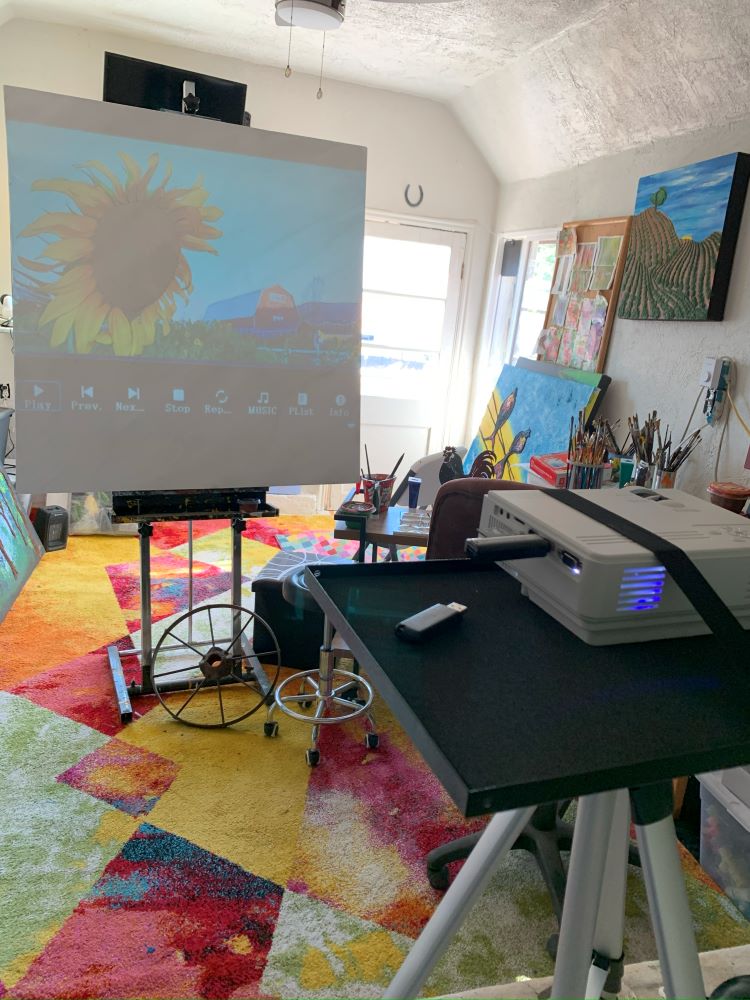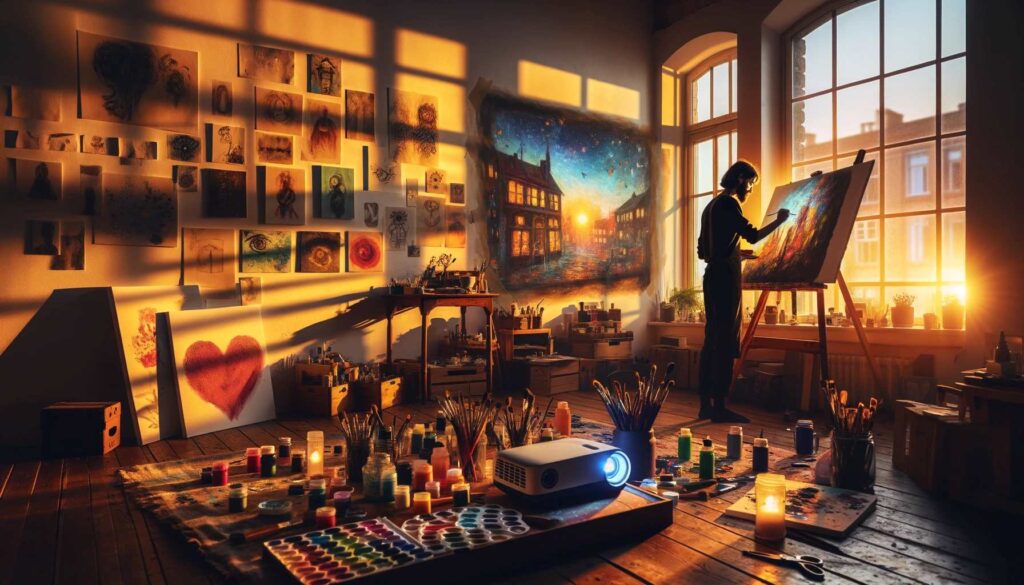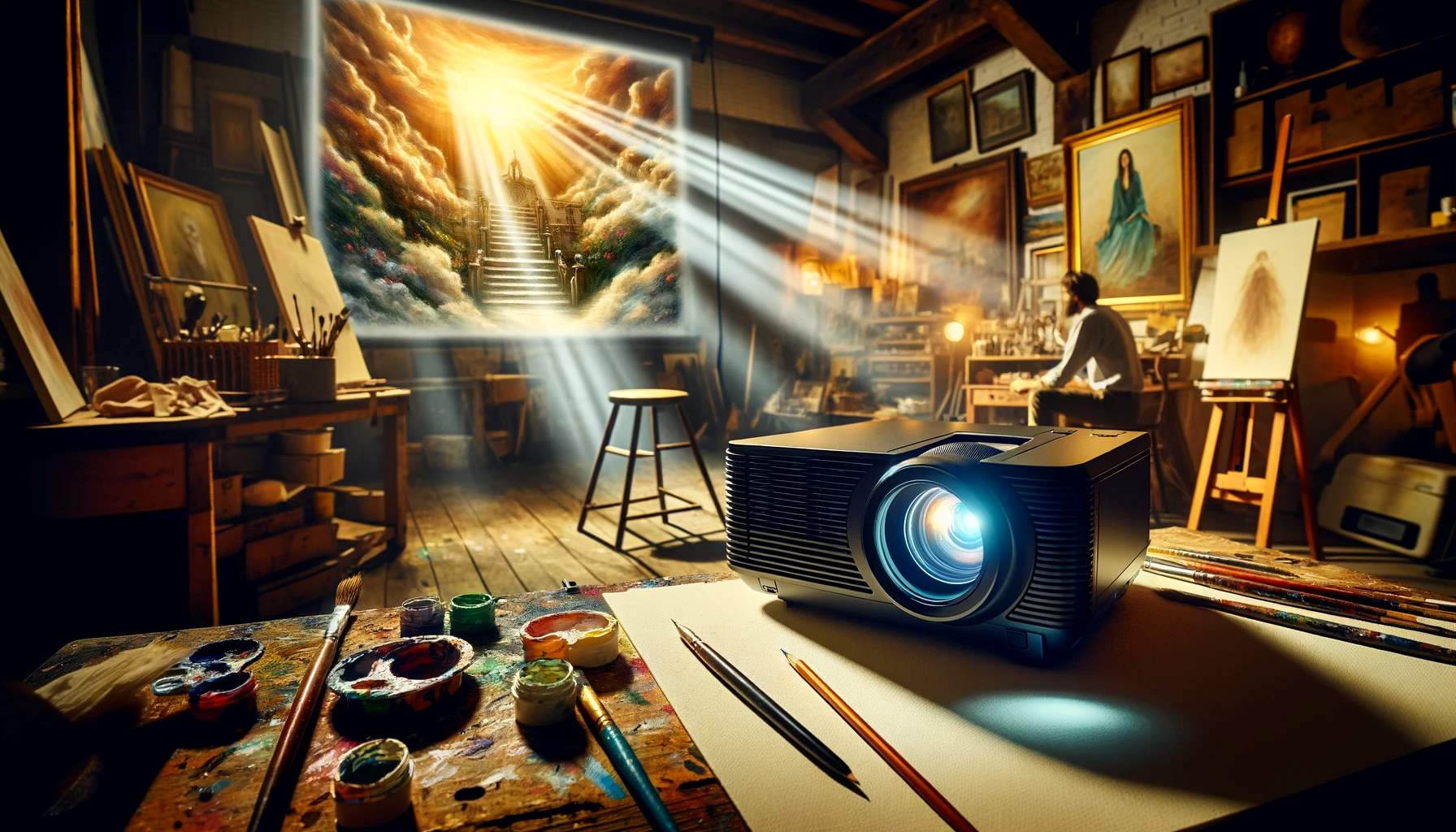This post contains affiliate links.
Unleashing Creativity
In the world of art and creativity, the traditional meets the technological, offering artists unprecedented ways to bring their visions to life. One such fusion of old and new is the use of projectors to outline and assist with acrylic paintings. This innovative approach not only streamlines the creative process but also opens up a world of precision and possibility for artists of all levels.
The Concept
At its core, using a projector in acrylic painting involves projecting an image or sketch onto a canvas to serve as a guide or reference for the artist. This technique can be particularly useful for those looking to achieve high levels of detail, work on large-scale pieces, or simply expedite the outlining process. It’s a method that embraces the efficiency of modern technology while maintaining the hands-on, tactile nature of traditional painting.

The Process
- Choosing the Right Projector: The first step involves selecting a projector. While most digital projectors work well, artists should look for models that can accurately display their desired images’ colors and details. Features to consider include resolution, brightness, and ease of connectivity.
- Preparing the Image: Artists must prepare the image they intend to project. This can involve adjusting the size, contrast, and brightness to ensure it translates well onto the canvas. Software tools can be invaluable in this step, allowing for precise manipulation of the image.
- Setting Up the Workspace: The workspace should be arranged to accommodate the projector and canvas. The projector must be positioned so that its lens is perpendicular to the canvas, ensuring the image is not distorted. Adequate space and proper lighting are also crucial for a seamless process.
- Projecting and Outlining: Once everything is set up, the artist can project the image onto the canvas. From there, it’s a matter of tracing the projected image with a pencil or directly with acrylic paints. This step doesn’t have to be overly precise; it’s more about laying down a foundational guide.
- The Painting Process: With the outline in place, artists can proceed with painting, filling in the projected sketch with acrylics. The projector can be turned on periodically for reference, or the artist can rely on the initial outline throughout the painting process.

Advantages
- Accuracy and Detail: This method allows artists to achieve a high degree of accuracy and detail, particularly for complex subjects or portraits.
- Time-Saving: It can significantly reduce the time spent on drawing and planning, allowing more time for the actual painting.
- Versatility: Projectors can be used for a variety of styles, from hyper-realistic to abstract, making this technique versatile.

Considerations
- Artistic Integrity: Some purists argue that using projectors can detract from the authenticity of the artistic process. However, many contemporary artists view this as simply another tool in their creative arsenal.
- Skill Development: While projectors can aid in the accuracy of outlines, they do not replace the need for fundamental drawing and painting skills, which are crucial for any artist’s growth.
In conclusion, using a projector as a tool in acrylic painting is a testament to the evolving landscape of art, where technology and tradition can coexist to expand the bounds of creativity. Whether for professional artists seeking precision or beginners looking for guidance, this method offers a bridge between the envisioned and the tangible, making art more accessible and achievable.
This post contains affiliate links.

